Vertigo - a masterpiece of cinema...
Introduction
The name Alfred Hitchcock conjures up two things; firstly the portly old Master of Suspense himself and secondly a series of classic suspense thrillers. Vertigo, the subject of this review, was released in 1954 and was originally considered a bit of a flop but has since gathered a reputation as one of, if not the best, of Hitchcock's films.
John 'Scottie' Ferguson (James Stewart) is a detective in the San Francisco police who is forced to retire after a near fatal fall during a rooftop chase which killed a fellow officer. Scottie's fall triggered an attack of acrophobia, a fear of heights, and he feels he has to retire rather than see out his career behind a desk. Patiently aiding Scottie come to terms with this is Midge (Barbara Bel Geddes), an ex-girlfriend who is still very much carrying a torch for the now ex-policeman.
Scottie is then contacted by an old school friend, Gavin Elster (Tom Elmore), out of the blue who wants to hire him to follow his wife Madeleine (Kim Novak). Elster's motives aren't due to suspicion of extra-marital misconduct though; his concerns are more to do with supernatural and mental health issues. It appears that Madeleine is haunted by the spirit of her great Grandmother Carlotta Valdés, a tragic figure who was abandoned by her husband who also took her baby before she finally killed herself in a fit of grief and loneliness - although according to Elster, Madeleine is unaware of her actions and can't remember any of what she does during the day. Scottie is reluctant to take on the case as he states firmly that he has retired, but Elster persuades him to take a look at Madeleine from afar at Ernie's restaurant that night where the husband and wife will be having dinner; one look at the beautiful Madeleine hooks Scottie and he willingly takes the case.
A trawl through San Francisco tailing Madeleine begins Scottie's obsession with a woman he barely knows, falling head over heels in love with her. This obsession will have tragic results for more than a few people…
Visual
Picture is as good as it will get at this point in time for a 1954 film, an expensive restoration taking place in 1997 by the same team of Robert A. Harris and James C. Katz who brought Lawrence of Arabia to the modern DVD audience so memorably. Unfortunately the restoration, impressive as it is, couldn't remove all the blemishes and artefacts, although they aren't enough to really distract from the viewing pleasure. There are a couple of shots and one sequence that were too damaged to restore into the same kind of quality as the rest of the film, the latter part of the Argosy Book Store sequence darkening quite considerably and the trip to the giant Redwood forest is a little blurry. Still, for the vast majority of the film, it looks superb.
The picture does look really superb for the most part; the view from below the Golden Gate Bridge is stunning. What really impressed me though was the quality of the general location shots around San Francisco and the pristine shininess of the cars shown, which might sound a little odd but it just helped the atmosphere of the piece for me. The problem with restoring some old film though is that it can uncover some flaws that weren't as obvious to cinema audiences at the time; here the matte paintings look more like the oil and canvas they really are and the fake Spanish tower really does look fake, especially in the overhead tracking shot (which is a fantastic shot however you look at it), but again these don't detract from the viewing.
Hitchcock also used a wide range of montage shots to convey emotion far more than mere dialogue ever could. One of the tricks he used to pull this off were shots from odd angles, something that I don't recall seeing in any other films, at least as much as Hitchcock used them. Hitchcock also used colour to add atmosphere and theme his film, red and green are the primary colours used here to brilliant effect.
The superb Vertigo effect, used quite sparingly really, was produced by both zooming in and tracking back simultaneously and is one of the most memorable photographic effects ever committed to film.
Audio
Excellent 5.1 Surround soundtrack, with some wonderful Foley effect work (recorded during the restoration work and possibly not for the purists, who probably wouldn't like a modern 5.1 Surround track anyway) and quite possibly one of the best and most memorable movie soundtracks ever. Bernard Hermann's soundtrack is both chilling and romantic in equal measure, and oddly for a film actually sets the scene during long sequences without dialogue, which is actually quite rare for film but follows Hitchcock's view on pure cinema; moving pictures without words.
There are four other soundtracks available here; the German soundtrack is 2.0 Stereo whilst the French, Italian and Spanish soundtracks are 1.0 Mono.
Extras
It's the 50th Anniversary Edition, so thankfully there's a whole plethora of extras. The first disc is actually an old version of the film, the one provided to me is actually part of The James Stewart Collection so it's unlikely to be too different from the original restoration release. Anyhow…
Disc 1:
Commentary - with Associate Producer Hugh Coleman and restoration team Robert A. Harris and James C. Katz with brief snippets from many others. This is one of those yak tracks that is an edited together piece, with name checks before the minor players say their brief piece. What struck me as interesting was that whilst Coleman was credited as Associate Producer, he was actually the Producer and was one of two in that position at the Studio at that time; Coleman actually produced most, if not all, of Hitchcock's best films.
Obsessed With Vertigo - nice half hour featurette on the lengthy and expensive restoration of Vertigo.
Production Notes
Cast & Filmmakers - text bio's for James Stewart, Kim Novak, Barbara Bel Geddes, Tom Helmore, Henry Jones and Alfred Hitchcock
Theatrical Trailers - trailers for both the original film and the restored release.
As this is clearly not the specific film disc for this release, it may well be that this disc has been re-authored as the style of the disc does show it's age (although it would appear that the set that this was part of was released in 2007). On the other hand, disc design in those days, whilst not as slick, was certainly better in text of the amount of information for those who could read and weren't simply interested in brief epk extras.
Disc 2:
Partners In Crime: Hitchcock Collaborators - nice new documentary that focuses on the four most well-known Hitchcock collaborators. This can be watched as separate chapters or as one long piece. The four chapters are:
1. Saul Bass: Title Champ - a look at the designer and the design of the title sequences for Vertigo and Casino amongst others, and how Bass almost single-handedly changed the role of the title sequence in film with The Man With The Golden Arm.
2. Edith Head: Dressing The Master's Movies - an overview of the most prolific and successful costume designers in cinematic history. Head worked on 491 films in total, was nominated for 35 Oscars and actually won 8 - the most nominated person in the history of the Academy Awards.
3. Bernard Herrmann: Hitchcock's Maestro - an examination of the composers of scores for Citizen Kane, Vertigo, The Birds (albeit in non-scoring capacity) and Taxi Driver.
4. Alma: The Master's Muse - a tender look at the most influential and important figure in Hitchcock's professional and personal life: his wife, Alma Reville. Hitchcock took her word as gospel and always sought the opinion of the person he loved more than life itself.
Pure Cinema: Through The Eyes Of Hitchcock - nice new documentary on Hitchcock, his films and the idea of Pure Cinema. The latter was an ideal held by the Master of Suspense as the use of pictures without words, and is probably best exemplified by the tailing of Kim Novak by James Stewart through San Francisco in Vertigo. Contributions from many including Martin Scorsese and Guillermo Del Toro.
The Vertigo Archives - production design sketches and storyboards in a slideshow, including some by Hitchcock himself.
Production Notes - text notes on both the film and restoration project, exactly the same as those on my film disc but with a different background.
Hitchcock/Truffaut Interviews - dated from 1962, this extra consists of audio interview backed by a montage of clips from Vertigo. François Truffaut interviewed the Master of Suspense for his book Hitchcock, with translation performed by Trauffault's associate Helen G. Scott.
An impressive roster of extras overall, and most not seen before as far as I can tell, although oddly the one missing extra (although it may yet be featured on the retail version of the main feature disc) is the extra ending found by the restoration team. This ending was required for overseas distribution where a more conventional ending to a film was required. I've not seen it but it seems to be a rather superfluous piece that just ties up a few loose ends and detracts from the emotional climax of the film.
Overall
I'm pretty sure I've seen Vertigo before, can't remember when exactly but it must have been a while ago - probably on TV many years ago in all truth. I was aware of the film and its reputation but in all honesty couldn't really remember what it was about, bar the music and that fantastic Vertigo effect. For probably one of the first times that I've done this, I even watched all of the extras prior to the main film and I was still stunned by the impact of the film and emotional power of the climax, which I both was and wasn't expecting.
The acting in this film is simply sublime from the two leads. James Stewart plays a different character than he would normally commit to celluloid, his character takes obsession to the nth degree in a time when you rarely saw this kind of behaviour in a lead character, certainly not to this extent. Oddly, despite all his obsessive behaviour throughout this film, becoming progressively aggressive in the meantime, the viewer still feels a sense of acute sympathy for Scottie; most of this is due to Hitchcock's masterful touch at revealing the mystery at the core of the film well before its end, thus accentuating the grief he is going through. Kim Novak was actually second choice for this film, Hitchcock initially planned the lead role to go to upcoming starlet Vera Miles until endless delays including gallstone surgery for Hitchcock meant that she had to drop out due to pregnancy. Novak puts in a masterful performance in two roles, and as is the case where the acting is so good, you just can't imagine anyone else in that role. A young Barbara Bel Geddes is also quite excellent as the torch carrying Midge who starts off just trying to help her friend through the trauma of his rooftop escape, the realisation and grief when she finally understands the depth of obsession through her own miscalculation is overwhelming.
Although the story is actually pretty pedestrian by modern standards, Hitchcock pulls it off with so much aplomb that its emotional impact still resonates strongly fifty years after intial release. While Hitchcock was the undoubted master of his craft, he was helped along the way to making this film the cinematic classic is today. The title sequence by Saul Bass really sets the tone, aided by the eerie music created by Bernard Herrmann. The score for the rest of the film pulls the viewer in several directions and lulls the viewer into a false sense of security with an impossibly romantic score which makes the shocks delivered by Hitchcock resonate ever more strongly.
I really can't say enough about this film. I loved it so much that I immediately bought two boxsets of Hitchcock's work from Amazon. For anyone unfamiliar with this film, I suspect you'd be pushed to get a stronger recommendation than that.
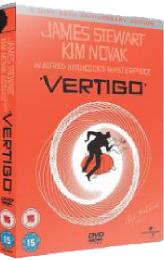
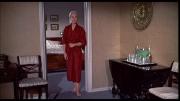
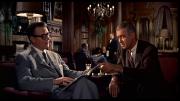

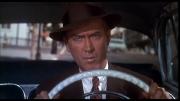
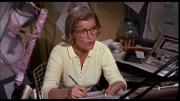
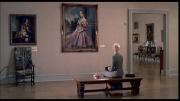
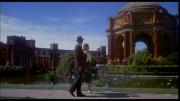
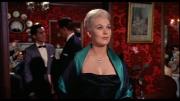
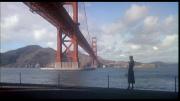
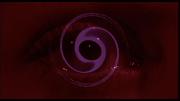
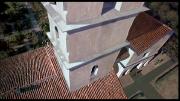








































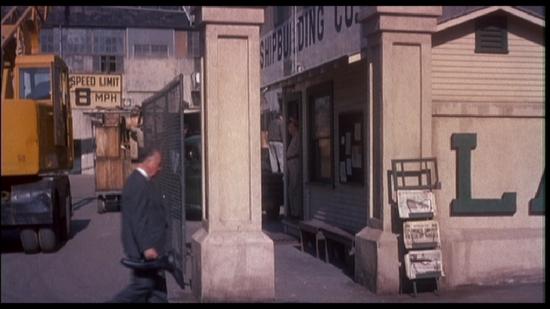
Your Opinions and Comments
Be the first to post a comment!